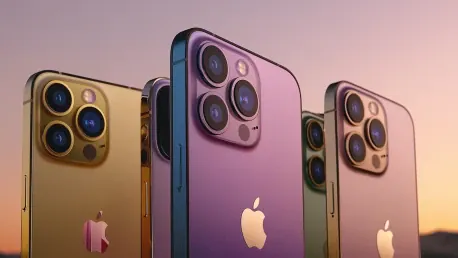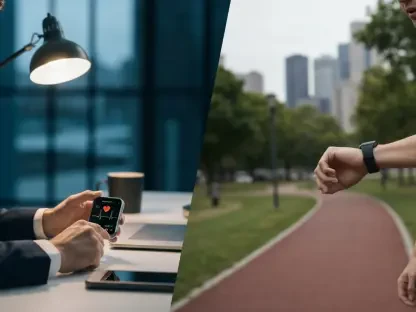In an unexpected move that has sent waves through the industry, Apple recently introduced the iPhone 16e, aimed at redefining the standard for entry-level smartphones. This launch not only showcases Apple’s commitment to bringing advanced technology to a wider audience but also comes with several significant product discontinuations and strategic shifts. These changes indicate a clear intention to streamline its lineup and focus on delivering a cohesive user experience. What’s most intriguing is how Apple balances cutting-edge features with accessibility, further blurring the lines between entry-level and premium devices.
Strategic Shift in Product Lineup
The End of the iPhone 14 Series
One of the key changes accompanying the launch of the iPhone 16e is the discontinuation of the iPhone 14 series. Apple traditionally reduces the prices of older models or discontinues them with the introduction of new models. However, the iPhone 14 series has faced significant criticism for several of its features, such as the always-on display and reliance on eSIM support. These features, while innovative, were perceived as complex and sometimes unnecessary, leading to consumer hesitation in upgrading. Moreover, the persistence of the outdated Lightning port in the iPhone 14 series played a notable role in its obsolescence, as Apple continued to evolve towards more advanced interfaces.
The removal of the iPhone 14 from Apple’s lineup signifies a broader strategy to simplify choices for consumers while promoting the latest advancements. By eliminating older models with less favorable reception, Apple aims to encourage the adoption of newer technologies that offer an improved user experience. This move is a clear indicator of Apple’s focus on innovating and setting high standards within the industry. With the iPhone 16e now in the spotlight, consumers can anticipate a more streamlined lineup that prioritizes modern functionality and seamless integration within the wider ecosystem of Apple devices.
A Unified Charging Standard with USB-C
Another significant update is Apple’s decision to transition all new iPhones, including the iPhone 16e, to USB-C ports. This step aligns with the company’s broader commitment to standardizing charging methods across its device portfolio, thereby promoting convenience and uniformity for users. The move away from the proprietary Lightning port to the more universal USB-C format reflects Apple’s acknowledgment of evolving consumer demands and regulatory pressures. This shift not only simplifies the charging process for users who own multiple Apple devices but also enhances compatibility with other brands and accessories.
USB-C’s introduction marks a pivotal moment in the tech landscape, as it brings faster data transfer speeds and more efficient power delivery to Apple’s smartphones. This change ensures that even entry-level devices like the iPhone 16e do not compromise on essential technological benefits. Users can now enjoy quicker charging times and the ability to connect to a broader range of peripherals, reinforcing the idea that advanced features should be universally accessible. This strategic decision underscores Apple’s dedication to fostering a more integrated and user-friendly tech environment, setting new benchmarks in the smartphone market.
Rebranding and Design Overhaul
From ‘SE’ to ‘e’: A New Marketing Strategy
In a surprising yet calculated move, Apple has rebranded its ‘SE’ lineup to ‘e,’ marking a significant departure from its previous marketing strategy. The ‘SE’ branding, which first appeared in 2016, was synonymous with offering affordable, high-performance iPhones that did not compromise on quality. However, the introduction of the ‘e’ branding suggests a shift in how Apple positions its entry-level devices within the market. While Apple has not explicitly revealed the rationale behind this rebranding, it is evident that the company aims to differentiate these newer models from their predecessors.
The shift from ‘SE’ to ‘e’ represents more than just a change of letters; it signifies a broader evolution in Apple’s approach to catering to budget-conscious consumers. The new ‘e’ models retain a balance of affordability and performance while encapsulating the latest in design and technology trends. This rebranding effort is anticipated to redefine consumer perceptions and establish a new identity for Apple’s entry-level offerings. The iPhone 16e embodies this transformation, presenting itself as a modern, sophisticated, and capable device tailored for users seeking value without compromising on essential features.
Larger Displays and Streamlined Design
In response to growing consumer demand for larger screens, Apple has expanded the display size of the iPhone 16e to 6.1 inches, enhancing the device’s usability and visual appeal. The elimination of the physical home button has allowed for this generous increase in screen real estate, facilitating a more immersive and engaging user experience. Additionally, the iPhone 16e now features a camera notch that integrates a Face ID sensor, bringing advanced biometric security to even entry-level models. This update underscores Apple’s commitment to providing a coherent design language across all its devices.
The shift towards a notch and larger display marks a significant design overhaul, reflecting current technological trends and user preferences. The removal of the physical home button not only modernizes the device’s aesthetic but also improves its functionality, especially for users with varying needs and conditions. By incorporating features typically reserved for higher-end models, Apple ensures that the iPhone 16e stands out as a premium-feeling device within its price range. This design strategy serves to attract a broader audience, including those who prioritize both form and function in their smartphones.
Discontinuation of Familiar Products and Services
The Quiet Exit of Product Red
Another intriguing development accompanying the launch of the iPhone 16e is the gradual phase-out of the iconic Product Red colorways. These devices and cases have been instrumental in supporting HIV/AIDS research, contributing to a significant social cause. However, over the past three years, the presence of Product Red options has dwindled, and with the iPhone 16e debuting solely in White and Black finishes, it seems unlikely that the red variant will make a comeback soon. The discontinuation of Product Red raises questions about Apple’s future support for charitable initiatives through product sales.
While Apple has not formally announced the end of Product Red, the absence of this variant in recent product lines hints at a strategic move towards simplifying color options. The focus on more neutral and universally appealing finishes may be part of a broader effort to streamline choices and create a more uniform product lineup. Although the end of Product Red is poignant for long-time supporters, it also highlights Apple’s evolving priorities and the shifting landscape of cause-related marketing within the tech industry. The iPhone 16e’s limited color options signify a move towards a more minimalist and cohesive brand identity.
Streamlining for Consistency and Convenience
In a surprising twist that has reverberated throughout the tech world, Apple has unveiled the iPhone 16e, a device set to redefine the expectations for entry-level smartphones. This bold release underscores Apple’s dedication to making advanced technology accessible to a broader audience while concurrently reshaping its product lineup. The introduction of the iPhone 16e not only highlights Apple’s innovative spirit but also signifies major product discontinuations and strategic shifts. These deliberate changes suggest a focused effort to simplify its offerings and enhance overall user experience. Notably, the iPhone 16e strikes a delicate balance between state-of-the-art features and affordability, effectively bridging the gap between entry-level and premium smartphones. This move exemplifies Apple’s strategy to blur the lines in the smartphone market, making high-end technology more attainable and ensuring a seamless and cohesive user experience across all devices.









